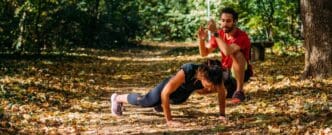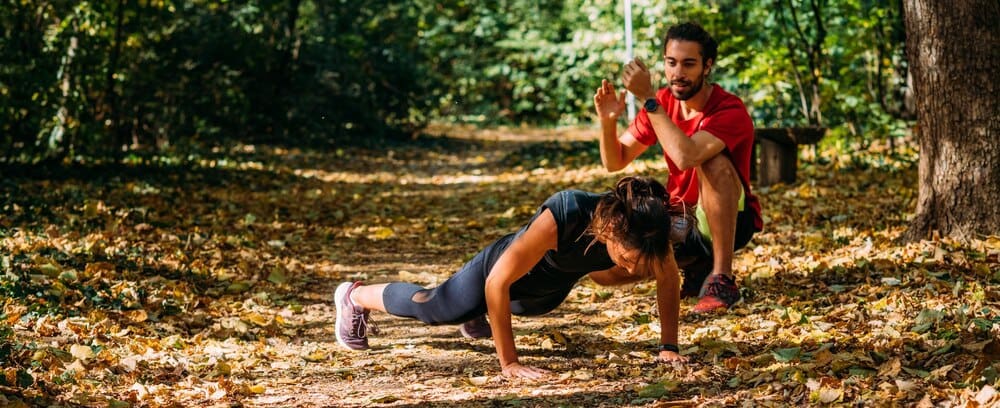For Miami residents seeking a dynamic and effective workout that builds strength and endurance without the high impact of running, the answer may be simpler than you think: rucking. This fitness modality, which involves walking with a weighted backpack, is for anyone looking to transform their daily walk into a full-body challenge. It can be done anytime, anywhere—from the sandy shores of South Beach to the urban pathways of The Underline—making it a uniquely adaptable workout for the Magic City. Rucking offers a powerful, science-backed way to improve cardiovascular health, build functional strength, and forge mental resilience, all while exploring the vibrant backdrop of Miami.
What Exactly Is Rucking?
At its core, rucking is the act of walking with weight on your back. The term originates from the military, where soldiers carry heavy packs, or “rucksacks,” over long distances as a foundational part of their training. It’s a test of both physical and mental fortitude.
However, you don’t need to be a soldier to reap the benefits. For civilians, rucking bridges the gap between cardio and strength training. It takes a simple, accessible activity—walking—and amplifies its intensity and effectiveness by adding resistance.
Unlike hiking, which is often defined by its leisurely pace and natural terrain, rucking is more purposeful. The focus is on maintaining a steady pace and managing the load on your back. It’s also distinct from running, as its low-impact nature places significantly less stress on your joints, making it a more sustainable option for many people.
The Science-Backed Benefits of Rucking
Rucking is more than just a hard walk; it’s a comprehensive workout backed by exercise science. The benefits are wide-ranging, impacting everything from your heart to your muscles and mind.
Superior Cardiovascular Health
Walking is good for your heart, but rucking is even better. The added weight elevates your heart rate more significantly than regular walking, pushing you into what’s known as Zone 2 cardio. This is the optimal zone for building an aerobic base and improving your body’s ability to efficiently use oxygen.
Sustained rucking sessions can lead to a lower resting heart rate, improved blood pressure, and an increased VO2 max—a key indicator of cardiovascular fitness and overall longevity. It trains your heart to become a more powerful and efficient pump.
Total-Body Functional Strength
The weight in your rucksack acts as a form of resistance, turning your walk into a mobile strength-training session. Your shoulders, back, and core muscles must engage constantly to stabilize the load and maintain an upright posture.
Simultaneously, your legs, glutes, and hips work harder with every step to propel the extra weight forward. This builds functional strength, the kind you use in everyday life, like carrying groceries, lifting a child, or moving furniture.
A Low-Impact, Joint-Friendly Workout
High-impact activities like running can be tough on the knees, hips, and ankles. Rucking, by contrast, is a low-impact exercise. Because one foot is always on the ground, you avoid the jarring forces associated with running, reducing the risk of stress-related injuries.
This makes rucking an excellent choice for individuals who find running painful, are recovering from injuries, or are simply looking for a fitness routine they can sustain for decades to come.
Enhanced Calorie Burn
Adding weight dramatically increases the energy expenditure of walking. Depending on the weight carried and your pace, rucking can burn up to three times as many calories as walking the same distance without a pack. This makes it a highly efficient tool for weight management and improving body composition.
Mental Resilience and Outdoor Exposure
Carrying weight over a distance is as much a mental challenge as it is a physical one. It teaches you to push through discomfort and builds mental toughness. Completing a challenging ruck provides a profound sense of accomplishment.
Furthermore, rucking encourages you to get outside. Spending time in nature, or “green exercise,” is proven to reduce stress, boost mood, and improve cognitive function. In a city like Miami, this means trading the gym for sunshine, ocean breezes, and scenic views.
Your Miami Beginner’s Rucking Starter Kit
Getting started with rucking is simple and requires minimal gear. You likely already own much of what you need.
The Rucksack (Backpack)
When you’re just beginning, any durable backpack will do. A sturdy school or daypack is perfectly fine for your first few outings. Ensure the shoulder straps are padded and comfortable.
As you become more serious, you might consider investing in a dedicated rucksack from a brand like GORUCK. These are specifically designed to carry weight comfortably and securely, often featuring a dedicated plate pocket, a sternum strap, and a hip belt to distribute the load.
The Weight
Start light. A good rule of thumb for beginners is to start with 10-20 pounds. You don’t need special equipment for this. Wrap a dumbbell or kettlebell in a towel, use sandbags, or even fill jugs with water and seal them tightly.
For a more stable and comfortable experience, you can purchase ruck plates, which are flat, dense weights designed to slide into a backpack. The key is to position the weight high on your back, between your shoulder blades, and as close to your spine as possible to maintain your center of gravity.
Footwear and Socks
Supportive footwear is crucial. While standard running shoes are adequate to start, a good pair of trail runners or lightweight hiking boots will offer better stability and durability. Given Miami’s heat and humidity, choose shoes with good breathability.
Do not underestimate the importance of good socks. Opt for moisture-wicking materials like merino wool or synthetic blends to prevent blisters and keep your feet dry and comfortable.
Miami-Specific Essentials
Rucking in Miami requires a few extra considerations. Hydration is non-negotiable; carry a water bladder or bottles and drink frequently. Protect yourself from the sun with high-SPF sunscreen, a wide-brimmed hat, and sunglasses. Finally, use an anti-chafing balm on any areas prone to rubbing, especially in the humid climate.
How to Start Rucking: Your First Four Weeks
The key to building a sustainable rucking habit is progressive overload. Start slow and gradually increase the weight, distance, or frequency over time. Always listen to your body.
Week 1: The Foundation
Begin with a manageable weight, around 10 pounds. Aim for two rucking sessions this week, each lasting 20-30 minutes or covering 1-2 miles on a flat, even surface like a local park or boardwalk.
Week 2: Building Consistency
You can either stick with 10 pounds or increase to 15 pounds if you feel comfortable. Add a third session this week, or increase your two sessions to 30-40 minutes each. Focus on maintaining good posture: chest up, shoulders back, core engaged.
Week 3: Increasing the Challenge
This week, choose one variable to increase. Either add more weight (up to 20 pounds) or increase your distance or duration. You could also introduce a slight incline, like walking over the Venetian Causeway, to increase the intensity.
Week 4: Solidifying the Habit
By now, you should feel more comfortable under the load. Aim for three sessions with 15-20 pounds, each lasting 45-60 minutes or covering about 3 miles. Your body is adapting, and you are well on your way to making rucking a regular part of your routine.
Top Rucking Spots in Miami
Miami offers a diverse landscape perfect for rucking, from serene parks to challenging urban inclines.
For Beginners (Flat & Scenic)
South Pointe Park: With its wide, paved paths, stunning ocean views, and consistent breeze, this is an ideal spot for your first few rucks.
Miami Beach Boardwalk: This iconic, flat stretch offers miles of uninterrupted walking with the energy of the city beside you.
The Underline: This 10-mile linear park below the Metrorail is a fantastic, shaded option for a long, flat ruck through different neighborhoods.
For Intermediate Ruckers (Hills & Distance)
Rickenbacker Causeway: Known affectionately as the “Miami mountain,” the William Powell Bridge offers the best hill training in the city, rewarding your effort with breathtaking views of the skyline and Biscayne Bay.
Oleta River State Park: For a more natural feel, explore the miles of unpaved trails at Oleta, which offer varied terrain and a canopy of trees.
Virginia Key North Point Trails: These mountain bike trails provide a rugged, challenging surface for ruckers looking to improve stability and strength.
Rucking is a journey of incremental progress. It’s a powerful tool that combines the best of cardio and strength training into one simple, accessible activity. So grab a backpack, add a little weight, and start exploring the incredible landscape of Miami. Your body and mind will thank you for every step.







